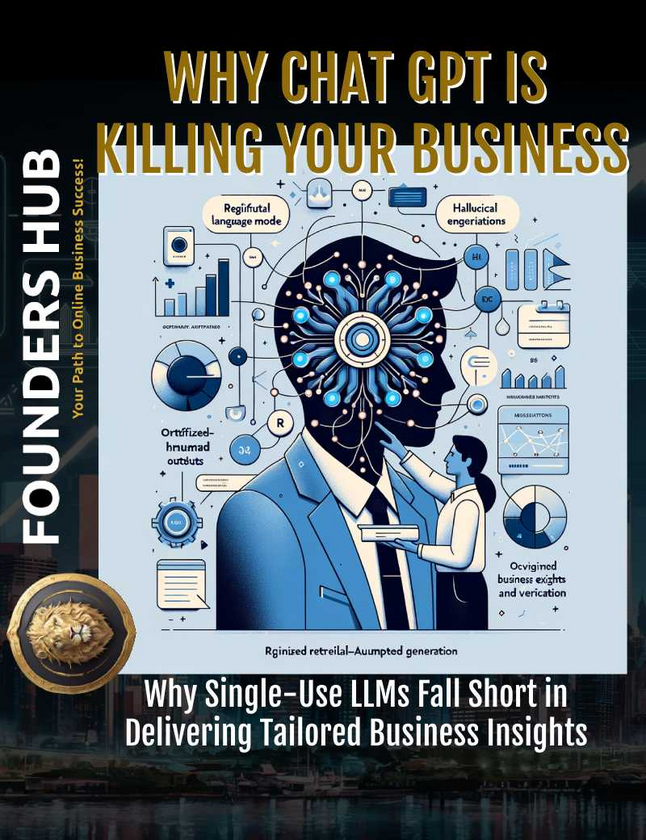👂🎵 Listen to the Podcast ✅
In social media, where brands compete for attention and engagement, having a distinct and well-crafted brand voice has become a crucial differentiator. A strong brand voice not only helps businesses stand out in a crowded market but also fosters emotional connections with their target audience, ultimately driving brand recognition, trust, and loyalty.
Key Takeaway: A consistent and authentic brand voice is essential for social media success, enabling businesses to differentiate themselves, build emotional bonds with consumers, and establish trust and credibility in a saturated digital landscape.
Why Brand Voice Matters
Differentiation in a Crowded Market
Standing Out from Competitors
With countless brands vying for consumer attention on social media, having a unique and recognizable brand voice can be a game-changer. A well-crafted voice allows businesses to stand out from the competition, making their content more memorable and engaging. Take, for example, the iconic brand voice of Wendy's on Twitter, known for its witty and sassy tone that resonates with its target audience.
Building Emotional Bonds with Consumers
Beyond mere differentiation, a compelling brand voice can foster emotional connections with consumers. In today's digital age, people crave authenticity and seek out content that resonates with their values, personalities, and lifestyles. By crafting a voice that aligns with their target audience's preferences and aspirations, brands can create a sense of familiarity and establish an emotional bond that transcends transactional relationships.
Consistency and Recognition
Ensuring a Cohesive Experience Across Platforms
Maintaining a consistent brand voice across all social media platforms is crucial for delivering a seamless and cohesive experience to customers. Inconsistency in tone, language, or messaging can lead to confusion and alienation, ultimately eroding the brand's credibility and trustworthiness. By ensuring a uniform voice across platforms, businesses can reinforce their brand identity and create a recognizable presence that resonates with their audience.
Building Trust and Credibility
A consistent brand voice plays a pivotal role in establishing trust and credibility with consumers. When a brand's communication style remains consistent and aligned with its values, it demonstrates a level of professionalism and commitment that instills confidence in the audience. This trust and credibility can translate into increased brand loyalty, positive word-of-mouth, and ultimately, a stronger competitive advantage.
Developing a Brand Voice
Understanding the Brand's Identity and Values
Defining What the Brand Stands For and Its Personality
Developing an authentic and resonant brand voice begins with a deep understanding of the brand's identity and core values. This involves carefully examining what the brand stands for, its unique selling proposition, and the personality traits it embodies. By clearly articulating these elements, businesses can create a voice that accurately reflects their brand's essence and resonates with their target audience.
Documenting the Brand Voice
Creating Guidelines for Consistent Communication
Once the brand voice has been defined, it is crucial to document it in a comprehensive set of guidelines. These guidelines should serve as a reference for all content creators, marketers, and customer service representatives, ensuring consistent communication across all touchpoints. A well-crafted brand voice document should outline the tone, style, language preferences, dos and don'ts, and examples of both effective and ineffective communication.
| Brand Voice Element | Description |
|---|---|
| Tone | The overall attitude and emotion conveyed in the brand's communication (e.g., friendly, professional, humorous). |
| Style | The specific language choices, grammar, and formatting used (e.g., casual or formal, use of contractions, sentence structure). |
| Personality Traits | The human-like characteristics that define the brand's personality (e.g., witty, approachable, authoritative). |
| Dos and Don'ts | Clear guidelines on what language and messaging align with the brand voice and what should be avoided. |
| Examples | Real-world examples of effective and ineffective brand voice implementation. |
By documenting these guidelines, businesses can ensure that their brand voice remains consistent and authentic across all social media platforms and marketing channels, fostering a cohesive and recognizable brand experience.
Maintaining Consistency Across Platforms
Adapting to Platform-Specific Nuances
Understanding the Unique Culture and Language of Each Platform
While maintaining a consistent brand voice is essential, it is equally important to adapt to the unique culture and language of each social media platform. Platforms like Twitter, Instagram, and TikTok have their own distinct communities, norms, and linguistic quirks. Brands should strive to understand these nuances and tailor their messaging accordingly, while still preserving the core elements of their brand voice.
For example, a brand's tone on Twitter might be more conversational and witty, leveraging hashtags and engaging in real-time banter with its audience. On Instagram, the same brand might adopt a more visually-driven approach, using captions that complement the aesthetic of their posts. By adapting to these platform-specific nuances, businesses can ensure their brand voice resonates with their audience on each channel, fostering authentic connections and engagement.
Engaging with the Audience
Responding to Comments and Messages Authentically
Maintaining a consistent brand voice extends beyond just crafting social media posts. It is equally important to engage with the audience in a manner that aligns with the brand's voice and values. This includes responding to comments, messages, and inquiries promptly and authentically, using the same tone and language that the audience has come to expect.
Brands should prioritize genuine and personalized responses, avoiding generic or scripted replies that can come across as insincere. By engaging with their audience in an authentic and consistent manner, businesses can foster trust, build stronger relationships, and demonstrate their commitment to delivering exceptional customer experiences.
Engaging with User-Generated Content
In the realm of social media, user-generated content (UGC) has become a powerful tool for brands to leverage. By actively engaging with UGC that features their products or services, businesses can not only strengthen their connection with their audience but also showcase their brand voice in a natural and organic way.
Successful brands often repost, comment on, or share UGC that aligns with their brand voice and values, creating a sense of community and fostering a two-way conversation with their audience. This approach not only amplifies the brand's reach but also reinforces its authenticity and commitment to engaging with its customers on a personal level.
Authenticity and Engagement
Being True to the Brand's Identity
Avoiding Insincere or Self-Promotional Posts
In the pursuit of maintaining a consistent brand voice, it is crucial for businesses to remain authentic and true to their brand's identity. This means avoiding insincere or overly self-promotional posts that can come across as disingenuous or out of touch with the audience's needs and preferences.
Brands should strive to strike a balance between promoting their products or services and providing genuine value to their audience. By prioritizing content that resonates with their target audience's interests, pain points, and aspirations, businesses can foster deeper connections and build trust, ultimately strengthening their brand voice and credibility.
Active Engagement with the Audience
Prompt and Authentic Responses
Maintaining an active and authentic presence on social media is essential for building strong relationships with the audience. This involves promptly responding to comments, questions, and mentions, using the brand's established voice and tone.
Brands should prioritize timely and personalized responses, avoiding generic or automated replies that can come across as impersonal or insincere. By actively engaging with their audience in a genuine and consistent manner, businesses can foster a sense of community, build trust, and reinforce their commitment to delivering exceptional customer experiences.
Monitoring Trends and Conversations
To stay relevant and authentic, brands must actively monitor trends and conversations within their industry and target audience. This involves keeping a pulse on emerging topics, memes, and cultural shifts that could impact their brand voice and messaging.
By leveraging social listening tools and engaging in real-time monitoring, businesses can identify opportunities to join relevant conversations, share valuable insights, and showcase their brand voice in a way that resonates with their audience. This proactive approach not only helps maintain authenticity but also positions the brand as a thought leader and a trusted source of information.
Impact on Business
Building Trust and Credibility
Demonstrating Understanding of Audience Needs and Desires
A consistent and authentic brand voice can play a pivotal role in building trust and credibility with the target audience. By demonstrating a deep understanding of their audience's needs, pain points, and desires through tailored messaging and communication, brands can position themselves as trustworthy and reliable partners.
When consumers perceive a brand as genuinely invested in their well-being and committed to delivering value, they are more likely to develop a sense of loyalty and advocacy. This trust and credibility can translate into increased customer retention, positive word-of-mouth, and ultimately, a stronger competitive advantage in the marketplace.
Increasing Brand Awareness and Engagement
Recognizability and Consistency Leading to Higher Engagement
A consistent and recognizable brand voice can significantly impact brand awareness and engagement on social media. When consumers encounter a brand's content and immediately recognize its distinct voice, they are more likely to engage with it, share it, and remember it.
Consistency in tone, language, and messaging across all social media platforms reinforces brand recognition and fosters a sense of familiarity with the audience. This recognition can lead to higher engagement rates, increased social media following, and ultimately, a stronger brand presence in the digital landscape.
Furthermore, by consistently delivering content that resonates with their target audience's interests and preferences, brands can foster a sense of community and loyalty, encouraging their followers to actively engage with their posts, share their content, and even become brand advocates.
Conclusion
In the ever-evolving world of social media advertising, maintaining a consistent and authentic brand voice is no longer a luxury but a necessity. By crafting a distinct and resonant voice that aligns with their brand's identity and values, businesses can differentiate themselves in a crowded market, build emotional connections with their target audience, and establish trust and credibility.
To achieve social media success, brands must not only develop a comprehensive brand voice strategy but also ensure consistent implementation across all platforms. This involves adapting to platform-specific nuances, actively engaging with the audience through authentic responses and user-generated content, and continuously monitoring trends and conversations to stay relevant.
By prioritizing authenticity, responsiveness, and a deep understanding of their audience's needs and desires, businesses can leverage the power of a consistent brand voice to increase brand awareness, foster engagement, and ultimately drive business growth and success in the dynamic social media landscape.
Final Tips for Maintaining a Consistent and Authentic Brand Voice:
- Regularly review and refine your brand voice guidelines to ensure they remain aligned with your evolving brand identity and audience preferences.
- Provide ongoing training and resources to ensure all team members responsible for social media communication are well-versed in the brand voice guidelines.
- Encourage cross-functional collaboration between marketing, customer service, and social media teams to ensure a cohesive brand voice across all touchpoints.
- Continuously monitor social media conversations and engage with your audience in a timely and authentic manner, fostering a sense of community and trust.
- Embrace user-generated content and leverage it as an opportunity to showcase your brand voice in a natural and organic way.
- Regularly analyze social media metrics and audience engagement to identify areas for improvement and refine your brand voice strategy accordingly.
By following these best practices and remaining committed to maintaining a consistent and authentic brand voice, businesses can unlock the full potential of social media advertising and forge lasting connections with their target audience.
need some asstance with your business?
Reach out to us today!




















